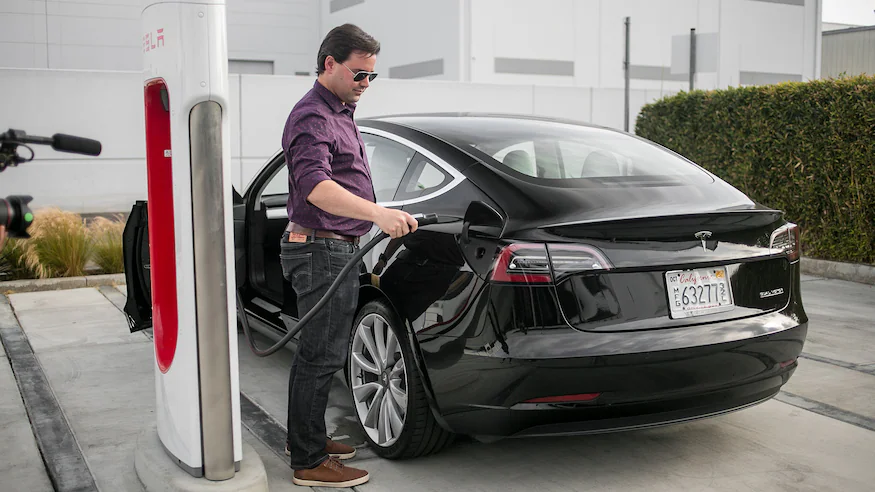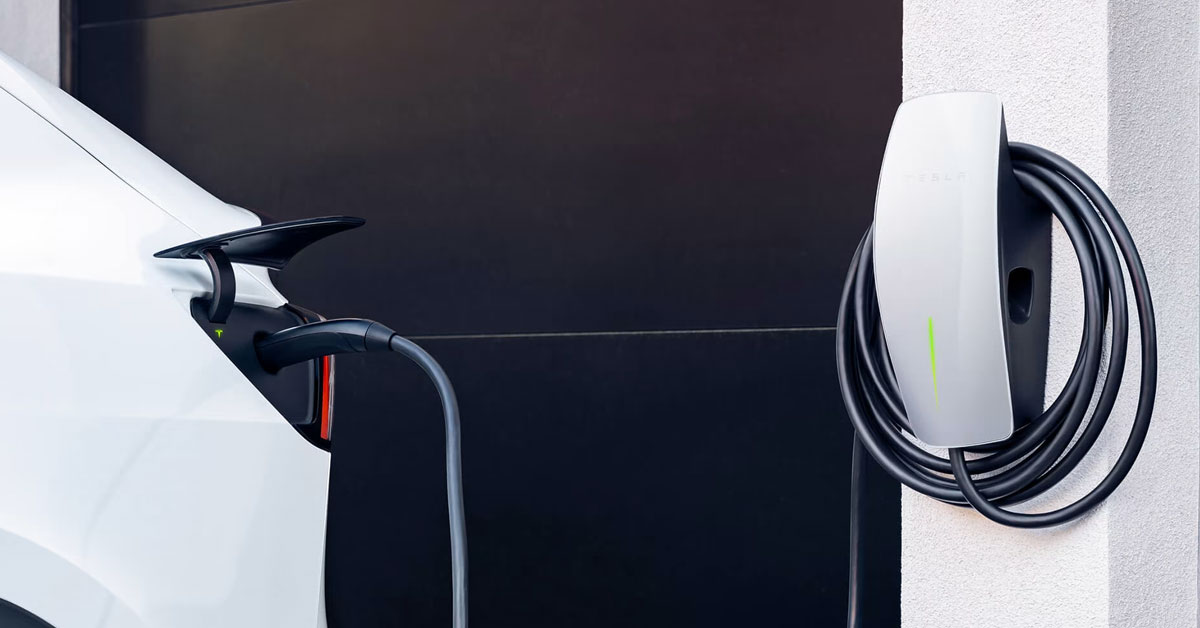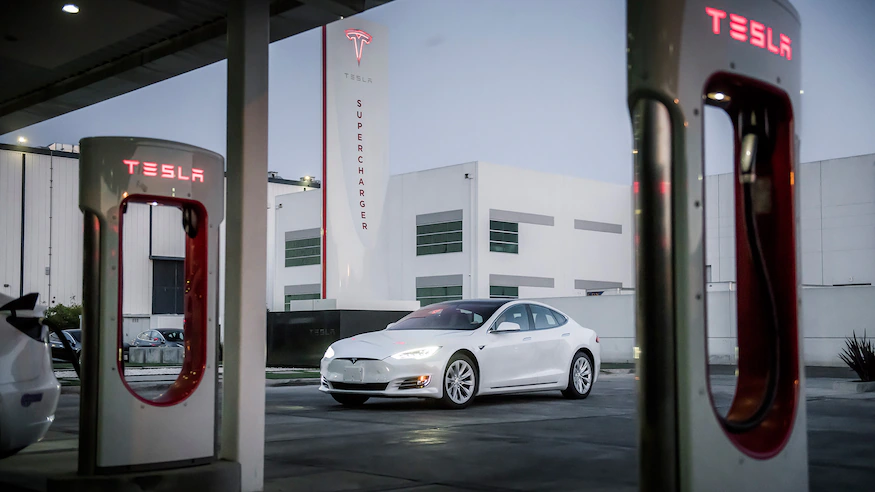The North American Charging Standard (NACS) is what Tesla named its proprietary electric vehicle (EV) charging connector and charge port when, in November 2022, it opened the patented design and specifications for use by other EV manufacturers and EV charging network operators worldwide. NACS offers both AC and DC charging in one compact plug, using the same pins for both, and supporting up to 1MW of power on DC.
Tesla has used this connector on all North American market vehicles since 2012 as well as on its DC-powered Superchargers and its Level 2 Tesla Wall Connectors for home and destination charging. Tesla’s dominance in the North American EV market and its buildout of the most extensive DC EV charging network in the U.S. makes NACS the most commonly used standard.
Is NACS a true standard?
When NACS was named and opened to the public, it was not codified by an existing standards organization such as SAE International (SAE), formerly the Society of Automotive Engineers. In July 2023, SAE announced plans to “fast track” standardizing the NACS Electric Vehicle Coupler as SAE J3400 by publishing the standard ahead of schedule, before 2024. The standards will address how plugs connect with charging stations, charging speeds, reliability and cybersecurity.
What other EV charging standards are used today?
J1772 is the plug standard for Level 1 or Level 2 AC-powered EV charging. Combined Charging Standard (CCS) combines a J1772 connector with a two-pin connector for DC fast charging. The CCS Combo 1 (CCS1) uses the U.S. plug standard for its AC connection, and CCS Combo 2 (CCS2) uses the EU style of AC plug. CCS1 and CCS2 connectors are larger and bulkier than the NACS connector. CHAdeMO was the original DC rapid-charging standard and is still in use by the Nissan Leaf and a handful of other models but is largely being phased out by manufacturers and EV charging network operators. For further reading, see our blog post about EV Charging Industry Protocols and Standards
Which EV manufacturers are adopting NACS?
Tesla’s move to open NACS for use by other companies gave EV manufacturers the option to switch to an EV charging platform and network known for reliability and ease of use. Ford was the first EV manufacturer to announce that, in an agreement with Tesla, it would adopt the NACS standard for North American EVs, enabling its drivers to use the Supercharger network.
That announcement was followed by General Motors, Rivian, Volvo, Polestar and Mercedes-Benz. The automakers’ announcements include equipping EVs with the NACS charge port beginning in 2025 and providing adapters in 2024 that will allow existing EV owners to use the Supercharger network. Manufacturers and brands still evaluating NACS adoption at time of publication include VW Group and BMW Group, while those taking a “no comment” stance included Nissan, Honda/Acura, Aston Martin, and Toyota/Lexus.
What does NACS adoption mean for public EV charging networks?
Outside of the Tesla Supercharger network, the existing public EV charging networks as well as those under development predominantly support CCS. In fact, EV charging networks in the U.S. must support CCS for the owner to qualify for federal infrastructure funding, including Tesla networks. Even if the majority of new EVs on the road in the U.S. in 2025 are equipped with NACS charge ports, millions of CCS-equipped EVs will be in use for the next decade or so and will require access to public EV charging.
That means for many years the NACS and CCS standards will co-exist in the U.S. EV charging marketplace. Some EV charging network operators, including EVgo, are already incorporating native support for NACS connectors. Tesla EVs (and future non-Tesla NACS-equipped vehicles) can already use Tesla’s NACS-to-CCS1 or Tesla’s NACS-to-CHAdeMO adapters to charge at essentially any public EV charging network across the U.S. The drawback is that drivers have to use the charging provider’s app or a credit card to pay for the charging session, even if the provider offers an Autocharge experience.
EV manufacturer NACS adoption agreements with Tesla include providing access to the Supercharger network for their EV customers, enabled by in-vehicle support for the network. New vehicles sold in 2024 by NACS-adopter manufacturers will include a manufacturer-provided CCS-to-NACS adapter for Supercharger network access.
What does NACS adoption mean for EV adoption?
Lack of EV charging infrastructure has long been a barrier to EV adoption. With the combination of NACS adoption by more EV manufacturers and Tesla incorporation of CCS support into the Supercharger network, more than 17,000 strategically placed high-speed EV chargers will be available to address range anxiety and open the way to consumer acceptance of EVs.
Tesla Magic Dock
In North America Tesla has been using its elegant and simple-to-use proprietary charging plug, referred to as the North American Charging Standard (NACS). Unfortunately, the rest of the automotive industry seems to prefer going against a user-friendly experience and stick with the bulky Combined Charging System (CCS1) plug.
To enable existing Tesla Superchargers to charge vehicles with CCS ports, Tesla developed a new charging plug docking case with a small built-in, self-locking NACS-CCS1 adapter. For Tesla drivers, the charging experience remains unchanged.
How To Charge
First, “there’s an app for everything”, so it’s no surprise that you have to download the Tesla app on your iOS or Android device and set up an account. (Tesla owners can use their existing account to charge non-Tesla vehicles.) Once that’s done, the “Charge Your Non-Tesla” tab in the app to will display a map of available Supercharger sites equipped with Magic Docks. Select a site to view information on open stalls, site address, nearby amenities, and charging fees.
When you arrive at the Supercharger site, park according to the cable’s location and initiate the charging session through the app. Tap on “Charge Here” in the app, choose the post number found at the bottom of the Supercharger stall, and lightly push up and pull out the plug with the adapter attached. Tesla’s V3 Supercharger can provide up to a 250-kW charging rate for Tesla vehicles, but the charging rate you receive depends on your EV’s ability.
Post time: Nov-10-2023

 Portable EV Charger
Portable EV Charger Home EV Wallbox
Home EV Wallbox DC Charger Station
DC Charger Station EV Charging Module
EV Charging Module NACS&CCS1&CCS2
NACS&CCS1&CCS2 EV Accessories
EV Accessories



